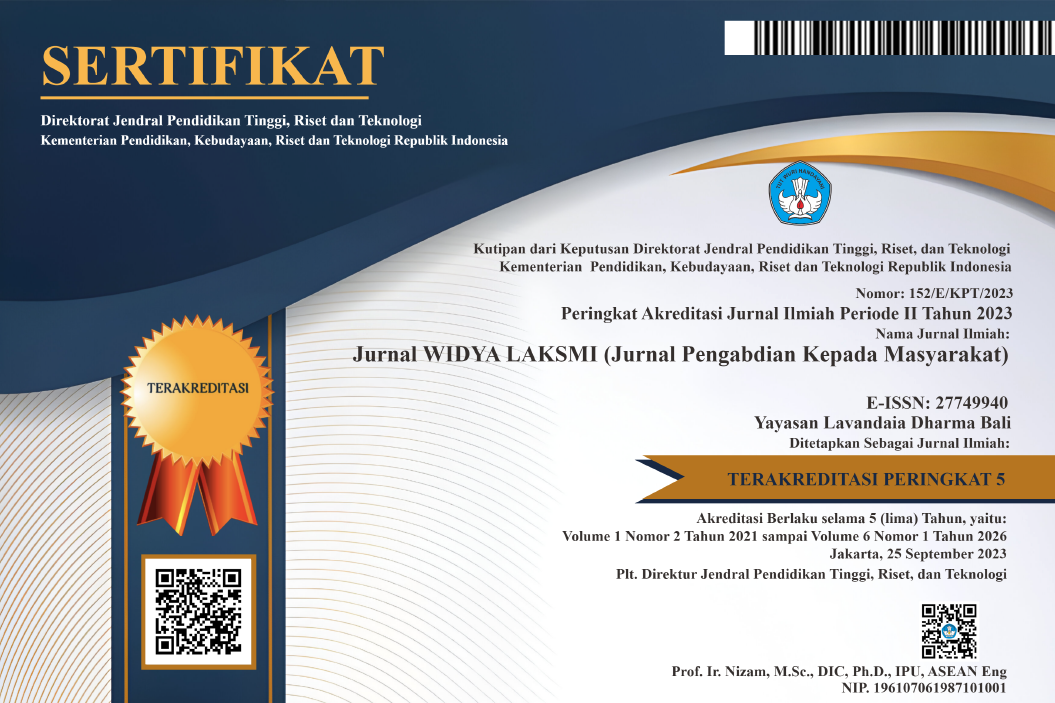SINTA 5

WIDYA LAKSMI (Jurnal Pengadian Kepada Masyarakat) Journal is a scientific multidisciplinary journal published by Yayasan Lavandaia Dharma Bali twice a year; January and July. It is a national journal that covers a lot of common problems or issues related to community services. The aim of this journal is to disseminate the conceptual thoughts or ideas and research results that have been achieved in the area of community services. Authors are required to register prior to submitting articles. Authors who want to submit their manuscript to the editorial office of WIDYA LAKSMI (Jurnal Pengadian Kepada Masyarakat) Journal should obey the writing guidelines. The editors will only accept the manuscripts which meet the assigned format.
All articles in WIDYA LAKSMI (Jurnal Pengadian Kepada Masyarakat) Journal will be processed by the editor through the Online Journal System (OJS), and the author can monitor the entire process in the member area. Articles published in WIDYA LAKSMI (Jurnal Pengadian Kepada Masyarakat) Journal, both in hardcopy and soft copy, are available as open access for educational, research and library purposes, and beyond that purpose, the WIDYA LAKSMI (Jurnal Pengadian Kepada Masyarakat) Journal editorial board is not responsible for copyright infringement.
PEER REVIEW PROCESS
The article that has been sent to WIDYA LAKSMI (Jurnal Pengadian Kepada Masyarakat) Journal will be through two review process namely pre-review and review. Pre-review process of the article is done by managing director that include:
If from the four components, there is something not in accordance, then the article will be returned to the writer to be revised. Writer is given time for seven days to revise the article and send it back.
When the four components in the review process are fulfilled, then the article will be continued to be reviewed by the reviewer through editor. The substances review process is done by two reviewer in Double Blind Peer Review. Reviewer can give recommendation such as:
Our Publication Ethics are based on COPE’s Best Practice Guidelines for Journal Editors.

SINTA 5

WIDYA LAKSMI (Jurnal Pengadian Kepada Masyarakat) Journal
published by :
Yayasan Lavandaia Dharma Bali
Br. Srijati No 15, Kel. Sibang Gede, Kec. Abiansemal, Badung - Bali
e-ISSN 2774-9940 dan p-ISSN: 2775-0191

